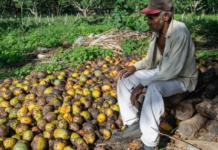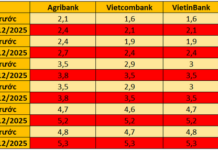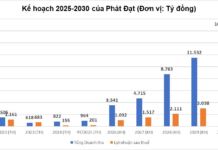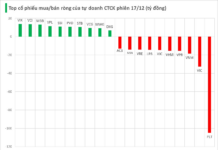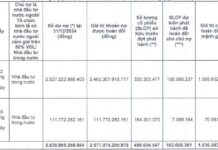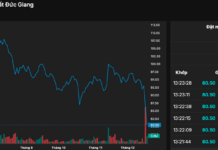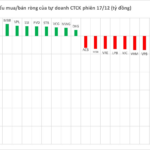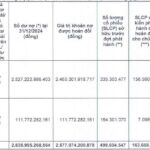Vietnam’s Economic Outlook: Growth Amidst Challenges
In its April 2024 Asian Development Outlook report released on April 11, the Asian Development Bank (ADB) projects continued economic expansion for Vietnam.
The forecast of 6% GDP growth this year and 6.2% in 2025 underscores the country’s resilience amidst a turbulent global economic landscape. However, the ADB acknowledges that Vietnam must navigate both external risks and longstanding domestic structural challenges to maintain this momentum.
Signs of Recovery
ADB analysts highlight that Vietnam’s economy faced an uphill battle in 2023 due to “declining global demand and high international interest rates.” Despite this, there are reasons for optimism for the next two years.
The government’s “rapid shift to a monetary policy that supports growth” and “large-scale public investment” are pivotal factors in sustaining a recovery that is already showing promising signs. The first quarter of 2024 saw a significant uptick in growth, reaching 5.7% compared to a much more modest 3.4% in the same period last year.
“The gradual return of new orders and consumption has revived the growth of the processing and manufacturing industry by the end of 2023, with the upward momentum tending to be stronger in 2024,” the ADB report observes. Additionally, domestic consumption is rising due to “lower interest rates, pro-growth fiscal measures, and recently improved land-related regulatory frameworks.”
Alongside manufacturing and consumption, Vietnam’s resilient agricultural sector, along with steady FDI inflows and remittances, are contributing to the overall recovery. These factors have maintained a trade surplus – a sign of economic strength in uncertain times.
Navigating Headwinds
“Vietnam’s economy is expected to grow at a solid pace this year and next, despite the challenging global environment,” affirms Shantanu Chakraborty, ADB Country Director in Vietnam.
However, he emphasizes a crucial caveat: “Global geopolitical uncertainties and domestic economic structural constraints could impact this outlook.” Therefore, in 2024, policymakers will need to carefully balance “short-term growth support measures to boost domestic demand with long-term structural improvement solutions to promote sustainable growth.”
A primary concern is Vietnam’s reliance on exports. Prolonged weakness in global markets stemming from “slow economic recovery and delayed normalization of interest rates in the United States and other developed economies” could undermine Vietnamese growth.
Domestically, the ADB identifies structural weaknesses that need addressing, including the country’s “high dependence on the export processing industry of FDI enterprises, loose linkages between export processing industries and the rest of the economy, [an] … underdeveloped capital market, …over-reliance on bank credit, as well as complex legal barriers for businesses.”
The Role of Policy
In the face of these challenges, Vietnam’s economic policymakers find themselves with limited options in one crucial area. “There is not much room left for monetary policy and interest rate reduction,” asserts Nguyen Ba Hung, ADB Chief Economist in Vietnam. Fiscal policy, therefore, takes center stage in 2024, but its potential is bottlenecked by sluggish credit growth.

(Photo source: VGP)
Hung explains, “The problem of low credit growth is not necessarily due to interest rates, but due to limited credit demand and absorptive capacity… credit capital will increase when consumer demand and investment increase, but capital needs to be directed to real production and business activities.”
Public Investment: Key Driver, Potential Bottleneck
To stimulate demand and drive growth, public investment remains a crucial lever. “Public investment is still a driving force for Vietnam’s economic growth, and [its] effective … implementation is important to promote growth,” underscores Nguyen Ba Hung.
The government has made significant efforts to accelerate public investment, setting a target of disbursing 95% of allocated funds in 2024. Yet, realizing this goal demands overcoming deeply ingrained bureaucratic obstacles.
The ADB report stresses that “more systematic measures are needed to improve legal and regulatory processes … to reduce barriers to effective project implementation.”
Delays arising from inadequate project readiness, slow land clearance processes, and rigid procurement procedures hinder efficient public investment deployment.
The report emphasizes that regulations must become more flexible to allow projects to adapt to volatile market conditions and unforeseen cost increases. Additionally, building capacity, particularly at the local level, is essential to streamline project preparation and execution.
The Road Ahead
Vietnam’s continued reliance on public investment in 2024 highlights the need to maximize its returns. While the government has implemented measures to improve disbursement efficiency, their full impact is yet to be seen.
“By proactively and comprehensively overcoming these obstacles, Vietnam can maximize the potential of public investment initiatives, promoting economic growth and sustainable development,” concludes the ADB analysis.





